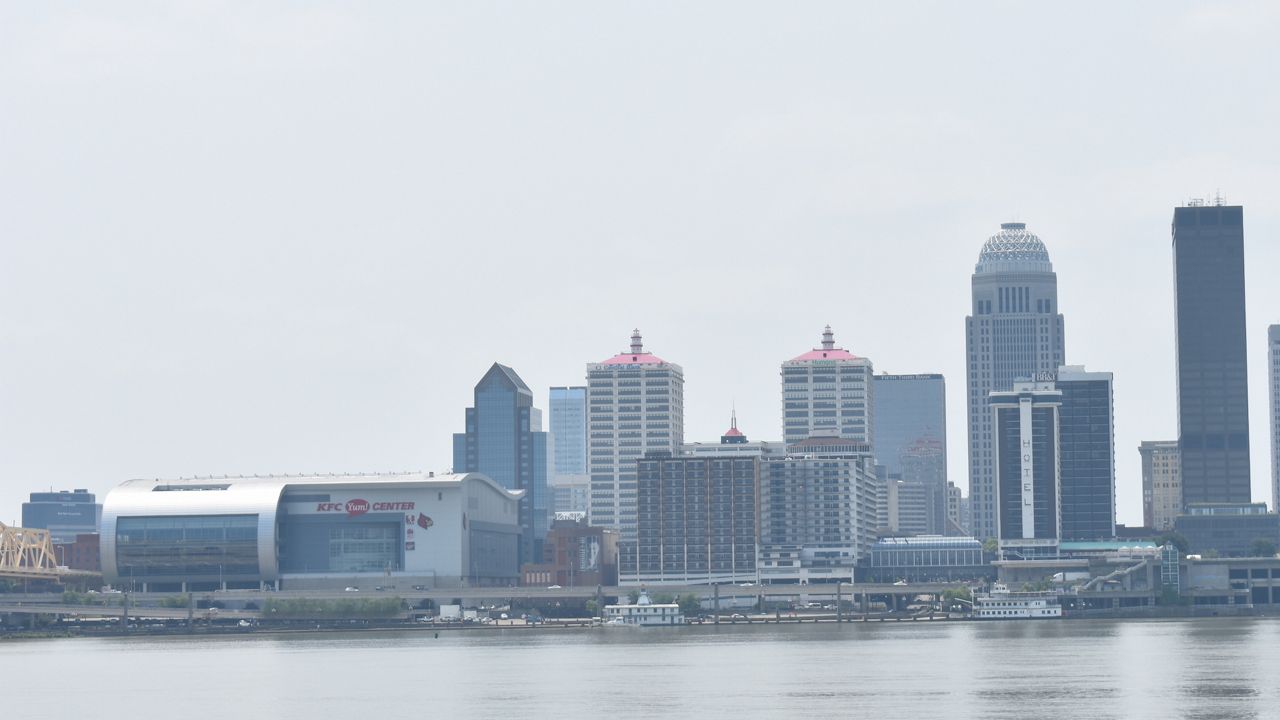LOUISVILLE, Ky. — Sunrises and sunsets in Louisville were more colorful than usual this week thanks to a haze floating over the city. But the smoke that made the sun so photogenic posed danger to some vulnerable populations.
The Louisville Air Pollution Control District (APCD) issued air quality alerts on Wednesday and Thursday. On both days, the air quality index fell in the orange range, meaning that being outside for prolonged periods could be unhealthy for sensitive groups. That included people with lung conditions such as asthma and COPD, along with children and the elderly.
The poor air quality, which will linger over the weekend, is the result of smoke from Western wildfires that's being blown all across the country. Currently, wildfires are burning in California, Idaho, Washington, Montana, and Oregon, home to the nation’s largest wildfire. As of Friday afternoon, the Bootleg Fire is smoldering on 625 square miles of land near the California border. It remains only 40% contained.
While Western wildfires are not uncommon, they don’t typically cause a haze to descend on cities thousands of miles away. But this week, unique meteorological conditions resulted in the hazy skies across the Ohio Valley.
Bryan Paris, APCD Air Monitoring Data Analyst, said that wind patterns and high pressure areas in the Mountain West region of the country pushed the emissions from the massive wildfires toward Kentucky and kept it all low enough to be visible.
Matt Mudd, Communications Coordinator for the APCD, told Spectrum News 1 what that smoke brings to town.
“There's the very obvious visual anomaly, especially if you’re on the other side of the river looking at the skyline,” he said. And there’s also something more sinister.
“What the Western wildfire smoke causes is fine particle pollution, which is one of the two main pollutions that we see in Louisville," he said. "The fine particle pollutants come from smoke. They’re absolutely tiny and the reason that they’re somewhat worrisome is that, in large enough concentrations, they can inflame your lungs or get into your bloodstream.”
The rash of wildfires burning in Pacific Northwest and the health effects felt from them thousands of miles away are the consequence of a rapidly warming climate, experts say. The region saw record breaking heat earlier this month and remains in the middle of a drought, ideal conditions for the spread of wildfire.
“As of today, there are nine large fires blazing across Oregon — including the largest fire in the country,” Oregon Gov. Kate Brown tweeted this week. “Let me be clear: The climate crisis has made fire season in Oregon more prevalent and dangerous, and we must work together to maximize resources and protect our communities.”
Experts also warn that the potential for wildfires to harm air quality across the entire country is growing. “These fires are going to be burning all summer,” University of Washington wildfire smoke expert Dan Jaffe told The Associated Press. “In terms of bad air quality, everywhere in the country is to going to be worse than average this year.”



